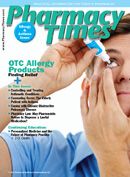Publication
Article
Pharmacy Times
Diabetes Watch
Sponsored by

Pharmacists Reduce Diabetes Treatment Costs and Improve Outcomes
New studies show that pharmacists’ direct participation in patient care significantly reduces treatment expenses and improves outcomes. A study from the University at Buffalo (UB) School of Pharmacy and Pharmaceutical Sciences included 50 patients with type 2 diabetes and realized cost savings with improvements in the hemoglobin A1C measurement—a key indicator of glucose control in diabetes patients. The higher the A1C score, the higher the risk for the patient to develop long-term complications associated with diabetes, such as kidney disease or vision problems.
The scientists found that clinical pharmacists, working together with primary care providers, were able to significantly reduce patients’ A1C levels in just 6 months. After 1 year of being in the program, patients’ A1C levels dropped by 1.1%, on average, and their overall metabolic profile was improved. In addition, annual medical costs per patient decreased by roughly $2500.
At the start of the program, UB pharmacists met each patient for 1 hour; after that, patients could call or make appointments with pharmacists at their discretion. Researchers attribute the success to the fact that patients had limitless access to pharmacists throughout the year.
Calories, Salt Increase Risk of Retinopathy in Diabetes Patients
Patients with diabetes should strictly control their intake of calories and sodium, according to the results of a new study published in Archives of Ophthalmology (January 2010). This is particularly true in African American patients with type 1 diabetes, who seem to have an increased risk for damage to the retina, also known as diabetic retinopathy (DR).
Monique S. Roy, MD, from the New Jersey Medical School, and colleagues examined the results of a food frequency questionnaire, answered by African American patients with type 1 diabetes at baseline and at follow-up 6 years later. The researchers found that among the group of 469 participants who were at risk for progression of DR, baseline total intake of calories was significantly associated with 6-year incidence of vision-threatening DR. It was also found that high sodium intake was a significant risk factor for incidence of macular edema.
Predicting Which Children Will Develop Diabetes
Childhood obesity rates continue to skyrocket, and this, in turn, is steadily increasing the number of children developing diabetes. A group of researchers has been looking at ways to determine whether a child will develop diabetes later in life.
John A. Morrison, PhD, of Cincinnati Children’s Hospital Medical Center, and colleagues set out to determine whether pediatric office measures (waist circumference, body mass index, systolic and diastolic blood pressures, and parental diabetes) and laboratory measures (eg, insulin) could predict type 2 diabetes risk at ages 19 and 39 years. After surveying school-children, Morrison and colleagues concluded that the pediatric office childhood measures predicted the presence of and absence of future type 2 diabetes 9 and 26 years after baseline. Insulin levels were a key predictor and may help guide methods of preventing type 2 diabetes (Archives of Pediatrics & Adolescent Medicine, January 2010).
ADA Updates Clinical Guidelines for Diabetes Testing
The A1C test will now be added as a means of diagnosing diabetes and identifying prediabetes to the American Diabetes Association’s (ADA’s) clinical practice recommendations (supplement to Diabetes Care, January 2010). The A1C test had previously only been used as a measure of how patients were controlling their diabetes over time.
According to the new recommendations, an individual without diabetes would have an A1C level of 5%; an A1C of 5.7% to 6.4% would indicate that blood glucose levels were in the prediabetic range; and a diagnosis of diabetes would occur at A1C levels of 6.5% or higher. The ADA recommends that diabetes patients keep A1C levels at or below 7%, which can help to prevent serious diabetes-related complications. â–
FAST FACT: The Centers for Disease Control and Prevention states that 5.7 million (or one fourth of all) Americans with diabetes do not realize they have the disease.
More on the Web
For pharmacist-recommended diabetes products, go to www.OTCGuide.net/diabetes_care.







